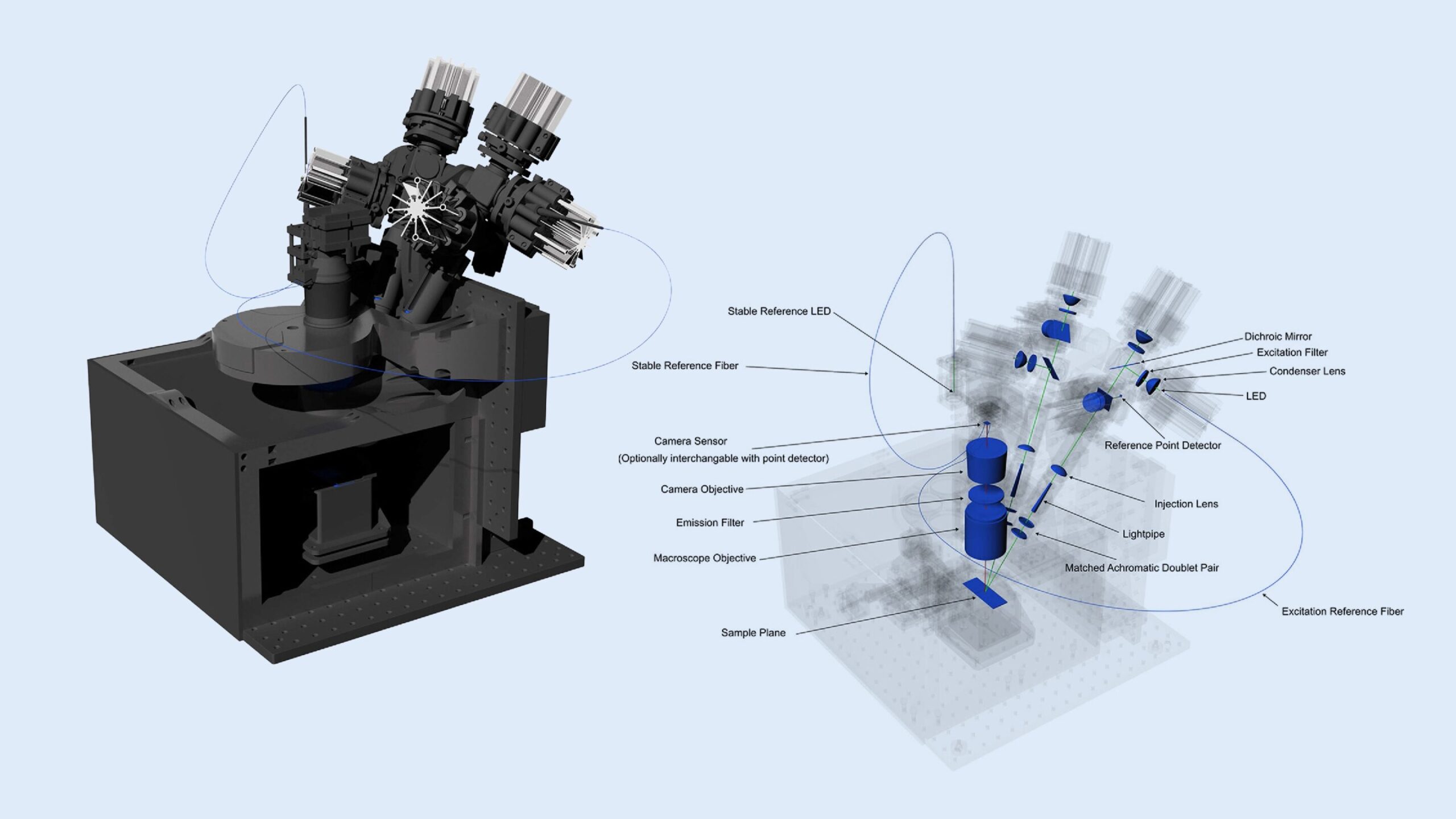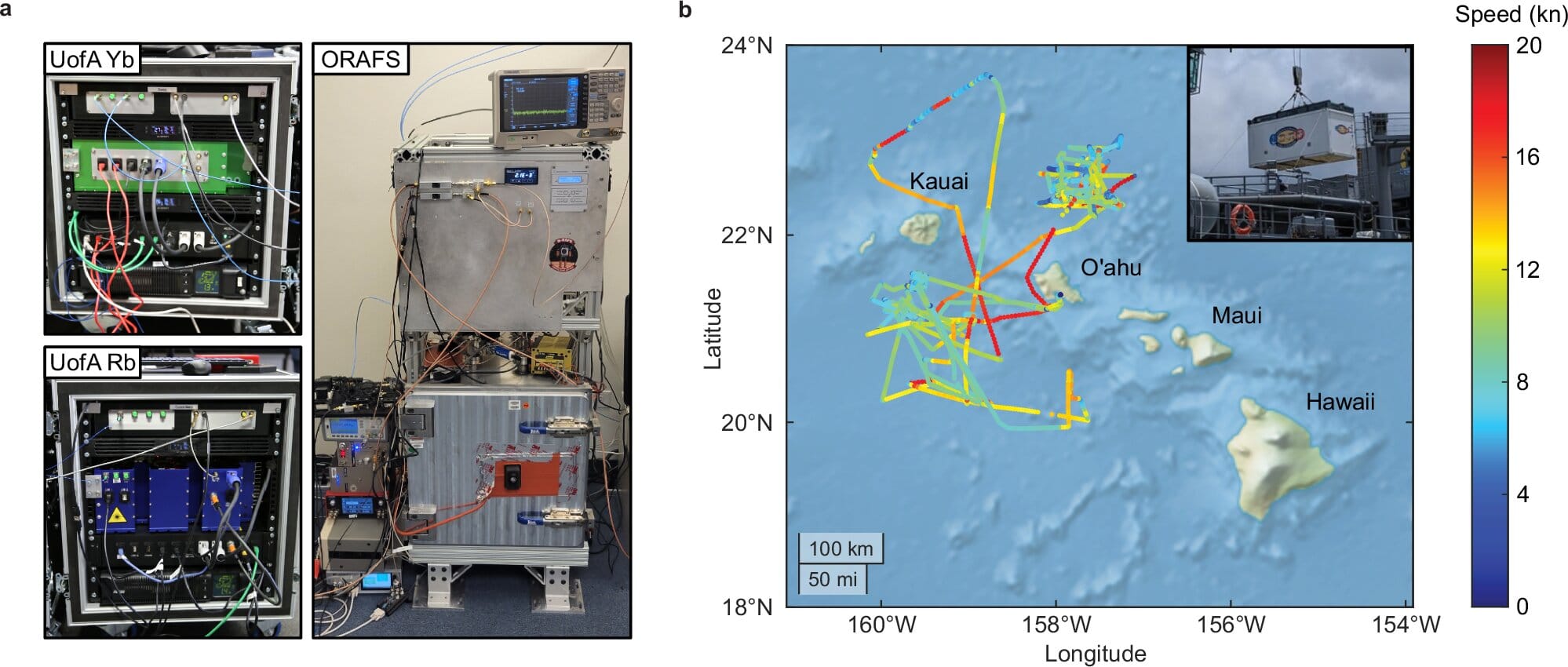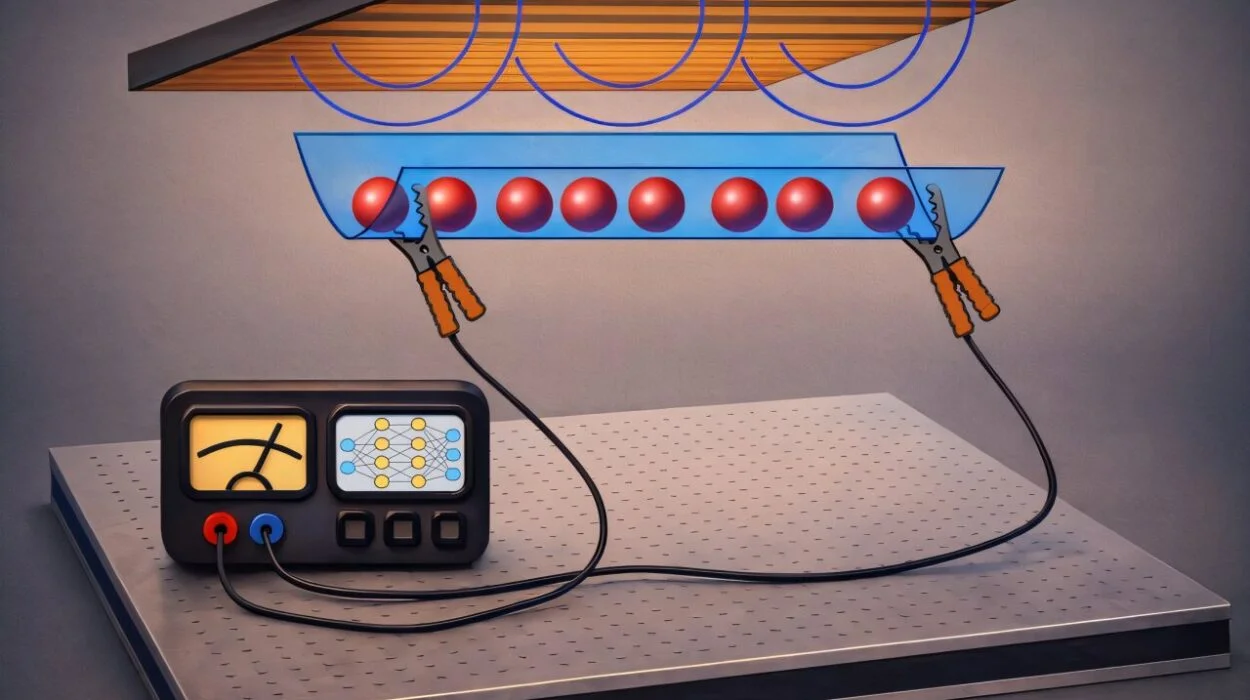In laboratories around the world, scientists use light to reveal the invisible—to watch plants breathe, proteins change shape, and solar cells come alive under electric currents. These experiments rely on luminescence imaging, a powerful technique that captures the faint glow emitted by materials as they respond to light or electricity. But there has long been a catch: building and maintaining the advanced instruments needed for these studies often costs hundreds of thousands of euros, and requires specialized expertise in optics, electronics, and software.
Now, a team of European researchers has shattered that barrier. Supported by the DREAM project, they have developed a versatile, open-source luminescence macroscope that makes cutting-edge imaging affordable, adaptable, and accessible to scientists from many disciplines. Their creation, described in Optics Express, promises to democratize the field of optical research by giving everyone—from plant biologists to materials engineers—the ability to explore light-driven processes with precision and ease.
The Power of an Open-Source Macroscope
At the heart of this innovation lies a simple yet transformative idea: make complex imaging tools as open and flexible as possible. The researchers’ new instrument combines flexibility, affordability, and high precision in a single, modular platform.
Unlike most commercial systems, which lock users into fixed optical designs, the new macroscope—officially called a luminescence macroscope with dynamic illumination—was engineered for freedom. It allows users to program complex light sequences, synchronize multiple wavelengths, and record high-speed luminescence responses. In other words, it gives researchers total control over how light interacts with their samples, whether they are studying living plants, glowing proteins, or next-generation solar cells.
And the best part? It can be built for under €25,000, using mostly off-the-shelf components and 3D-printed parts.
“We wanted to remove the barrier between imagination and experimentation,” said Dr. Ian Coghill of École Normale Supérieure in Paris, one of the project’s lead authors. “Our goal was to create a system that any lab could build and modify—without needing a team of optical engineers.”
To make that possible, the team released every aspect of the design as open-source material: 3D CAD files, assembly instructions, calibration protocols, and even Python-based control software. Everything is freely available online through the open-science platform Zenodo.
Making Light Work for Everyone
Luminescence imaging has long been one of science’s most powerful windows into the microscopic world. It reveals how plants convert light into energy, how electronic materials move charges, and how proteins behave inside living cells. But implementing advanced light-control techniques typically demands years of expertise. Each experiment must be fine-tuned—timing the flashes of illumination, adjusting wavelengths, and capturing the faint signals that follow.
The new macroscope bridges that gap. It’s designed not only for flexibility but also for simplicity. Researchers can easily set up their own illumination patterns, from smooth sinusoidal pulses to rapid bursts of light, to explore how samples respond in real time. The instrument can handle light sources ranging from ultraviolet to near-infrared (405–740 nm) and can capture up to 100 frames per second.
“Light is an incredibly sensitive probe,” explained co-author Dr. Ludovic Jullien, senior scientist and coordinator of the DREAM project. “With dynamic illumination, we can observe how systems respond to precisely timed signals—something that was previously possible only in highly specialized labs.”
One Instrument, Infinite Applications
To demonstrate the power and versatility of their creation, the researchers put it to the test across multiple fields.
In plant science, the macroscope revealed the subtle rhythms of photosynthesis in Arabidopsis thaliana, a model plant species. By applying dynamic fluorescence techniques, the team could track how plants absorbed and used light, and even monitor how herbicides affected their metabolic health.
In protein photophysics, they distinguished between different types of light-sensitive proteins by analyzing their kinetic “fingerprints.” Using a technique called RIOM (Rectified Imaging under Optical Modulation), the team could watch fluorescent proteins switch between light and dark states—vital information for designing better biosensors and imaging tools in cell biology.
In materials science, the macroscope proved equally transformative. Researchers mapped the electroluminescence of solar cells and light-emitting diodes (LEDs), revealing how charges moved and recombined inside these devices. By modulating light at different frequencies, they could gain new insights into how efficiently these materials convert energy—knowledge that could drive improvements in renewable energy technologies.
“These examples are just a glimpse of what’s possible,” said Jullien. “Because it’s open and programmable, anyone can adapt it—to study photosynthesis, test nanomaterials, or even explore entirely new types of light-matter interactions.”
Bridging Technology and Accessibility
For decades, advanced optical imaging has been the privilege of a few—large research institutions with the funding and staff to build custom instruments. Smaller laboratories, schools, or interdisciplinary teams often had to settle for limited tools, or rely on collaborations that took months to arrange.
The DREAM project’s macroscope changes that dynamic. Its open design puts power directly into the hands of researchers, educators, and innovators who might never have had access to such technology before. The fact that it can be assembled cheaply and maintained locally makes it ideal for universities and labs in developing regions.
By publishing not just the hardware but also the software and data processing scripts, the team has turned their invention into a true community resource—an evolving platform that anyone can modify or expand.
“This is not a one-off prototype,” said Coghill. “It’s a living toolkit. We want people to take it, improve it, and use it in ways we haven’t even imagined.”
The Open-Science Ethos
The project’s commitment to open science runs deep. Every part of the macroscope’s design and testing pipeline has been made freely accessible through Zenodo, an open-access repository supported by the European Union. The repository includes not only the design files but also raw experimental data, calibration routines, and example analysis scripts—essentially a step-by-step guide to replicating and extending the research.
This transparency ensures that others can validate the results, learn from the design process, and contribute their own modifications. It’s a model of scientific collaboration that accelerates discovery while breaking down the traditional walls between disciplines.
In the spirit of open innovation, the researchers invite users to adapt the macroscope to new fields—such as neuroscience, microbiology, or photonics—or to incorporate it into automated imaging workflows for large-scale experiments.
“Open hardware is the foundation for a more equitable scientific ecosystem,” said Jullien. “It allows creativity and resourcefulness to flourish everywhere—not just in well-funded labs.”
Lighting the Path Forward
The impact of this open-source macroscope extends far beyond the lab bench. It represents a shift in how we think about scientific tools—not as proprietary technologies to be guarded, but as shared instruments for collective progress.
In an era when science faces global challenges—from climate change to sustainable agriculture and clean energy—the ability to share and replicate powerful research tools could accelerate breakthroughs that benefit everyone.
The luminescence macroscope is more than a machine; it’s an invitation. An invitation to explore the hidden dance of photons and molecules, to see the unseen, and to build new bridges between disciplines.
More information: Ian Coghill et al, Versatile luminescence macroscope with dynamic illumination for photoactive systems, Optics Express (2025). DOI: 10.1364/oe.570450






